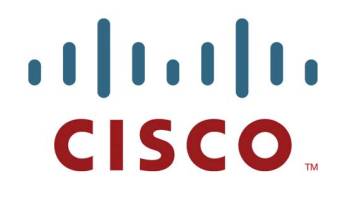Cisco Systems is rolling out a host of new and enhanced data centre networking products to bolster the scalability, flexibility and security of its networking fabric.
The products, which include the next generation of Cisco’s Nexus 7000 switches, a new Nexus 3000 Ethernet switch and fabric extensions to the vendor’s Nexus 5000 switches, are part of a push by the networking giant to enable enterprises to handle the rapidly growing amount of Internet traffic better.
Fully scalable infrastructure
The latest releases are also aimed at giving businesses a networking infrastructure that can scale and handle whatever the workload may be and whether that workload is in a physical, virtual or cloud environment, according to Shashi Kiran, director of marketing for Cisco’s Data Centre Solutions group.
 “[Enterprises] need the networking layer to be flexible enough to manage whatever application is thrown at them,” Kiran said in an interview with eWEEK.
“[Enterprises] need the networking layer to be flexible enough to manage whatever application is thrown at them,” Kiran said in an interview with eWEEK.
Networking vendors are increasingly pushing network fabrics that offer greater scalability and flexibility in a single architecture that extends beyond the data centre. Rival Juniper Networks offers its QFabric, while Hewlett-Packard earlier this year unveiled its FlexNetwork architecture. Most recently, Enterasys unveiled its OneFabric networking portfolio on 17 October.
However, Kiran argued that Cisco is a year or more ahead of its competition in all areas – including scalability and performance – with its United Fabric portfolio, which includes not only the Nexus data centre switches but also the MDS storage switches. The latest enhancements to the switch lineup underscore that lead, he said.
For example, the new capabilities in the Nexus 7000 platform and the new Cisco FabricPath support for the Nexus 5500 switch offer support for more than 12,000 10 Gigabit Ethernet server ports, more than doubling what is offered in rival portfolios, and for half the cost, Kiran said.
Streaming 4.5 million movies simultaneously
The Nexus 7000 series lets IT administrators scale their data centres from a few hundred servers to several thousand, while also addressing demands in such growing areas as cloud computing, and the expanding numbers of devices and mobile workers. A new Fabric 2 module and high-density L2/L3 10GbE F2 Series line card means high performance and reduced power per port of less than 10 watts. Cisco’s Fabric 2 enables switches to scale to 550Gbps (gigabits per second) per slot, more than the 230Gbps capacity found in Fabric 1.
With the new capabilities, the Nexus 7000 can stream 4.5 million Netflix movies at the same time, or download in 114 seconds the 250 million photos that are posted each day to Facebook, according to Cisco. The networking giant is predicting huge jumps in Internet traffic over the next few years, growing to 56 exabytes – or about 12.8 billion online movies – by 2013. Data centres are going to have to be able to handle such dramatic traffic growth, according to Cisco.
The Nexus 5500 is a top-of-rack switch that offers high 10GbE density and supports Cisco’s FabricPath, which brings greater scalability and helps businesses deal with data centre and cloud workloads that arise from virtualised environments and dynamic mobility scenarios. With the Fabric Extender (FEX) and VM-FEX capabilities, the 5500 can handle thousands of virtual machines with a single point of management.
Cisco is also rolling out the Nexus 7009, aimed at mission-critical data centres and campus cores. The switch comes in a compact 14U size and offers high availability and virtualisation support. In addition, the Nexus 3000 switches offer ultra-low latency for such environments as high-frequency trading, high-performance computing, “big data” and Web 2.0 deployments.
The company is also offering greater security capabilities for virtualised environments.
Aggressively refocusing
The latest products come at a time when Cisco officials are refocusing their efforts on the enterprise and their energies on the networking business, which has seen increased competition in recent years from the likes of HP and Juniper.
Over past quarters, Cisco executives have pared down the company’s consumer efforts and cut the workforce in efforts to make the company more efficient. The company has become more aggressive in defending its significant market share in switches and routers in the face of the rising competition.




